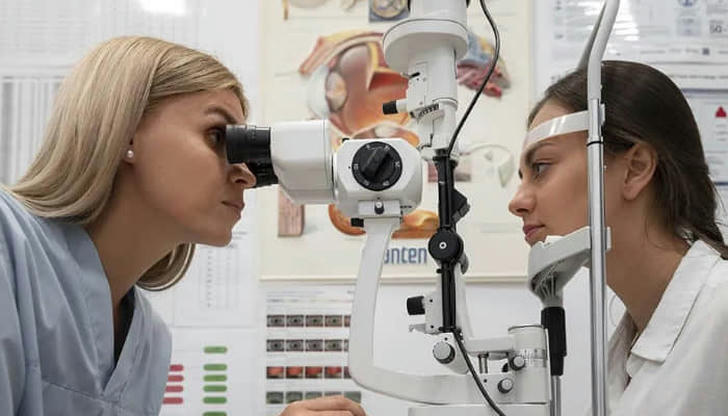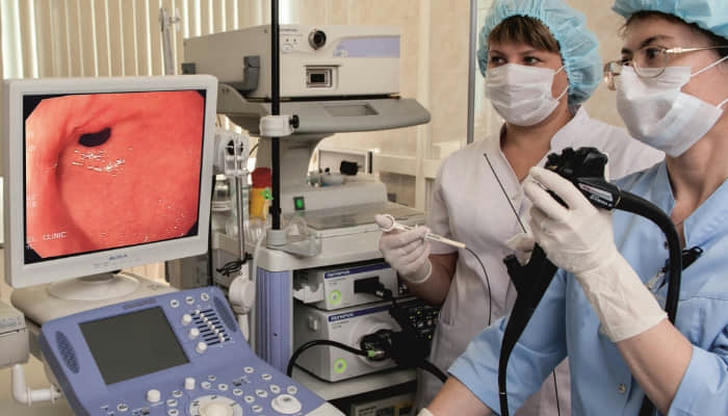Basic Health Screenings You Need in Your 50s, and Beyond (Men & Women)

As we age, our physical functions gradually decline. Regular health check-ups are essential for preventing diseases and maintaining health in the elderly. Although many healthcare professionals refer to those over 65 as elderly, we still recommend that you undergo screenings around the age of 50 to identify potential issues early and take preventive measures to avoid the onset of diseases.
The examinations for the elderly cover a wide range of tests, and the frequency and types of tests vary depending on gender and individual differences. Below, we'll discuss the basic health screenings for the elderly from three types: basic tests, tests for men, and tests for women.
Basic Health Screenings for the Elderly
1. Blood Pressure, Lipids, and Blood Sugar Tests
Hypertension, high cholesterol, and high blood sugar are chronic metabolic disorders that are common among middle-aged and elderly individuals, as well as among those who are overweight or have sedentary jobs. The risk of developing these conditions increases significantly after the age of fifty.
People with these conditions are at higher risk for cardiovascular and kidney diseases. If left untreated, these conditions can be life-threatening. Therefore, the elderly must have regular tests for blood pressure, lipids, and blood sugar.
• Blood pressure: It's recommended that the elderly have their blood pressure checked at least once a year. If abnormalities are detected, regular monitoring as advised by a doctor is necessary.
• Blood sugar: Abnormal blood sugar levels can lead to metabolic diseases like diabetes. A fasting blood sugar test should be conducted annually. Those with a family history of diabetes or high-risk factors should increase the frequency of testing.
• Lipid: Abnormal lipid levels are significant risk factors for cardiovascular diseases. An annual lipid profile, including total cholesterol, triglycerides, high-density lipoprotein (HDL), and low-density lipoprotein (LDL), is recommended.

2. Cardiovascular Disease Screening
Cardiovascular diseases have surpassed cancer in terms of incidence and mortality rates, becoming the leading cause of death. Atherosclerosis may begin forming in adolescence and manifest in middle age. Many sudden deaths are due to undiagnosed cardiovascular risk factors. Therefore, early detection through health check-ups is crucial for preventing cardiovascular diseases.
Common cardiovascular tests include electrocardiograms (ECG), ambulatory ECG, echocardiography, coronary CT angiography (CTA), cardiovascular system monitoring, carotid artery ultrasound, cerebral blood flow test, cranial CT scans, and cranial MRI scans.

3. Retinal Exam
An early retinal exam can help detect age-related cataracts and primary glaucoma. The retinal vessels are part of the body's vascular system, and the eye's unique transparent optics make retinal exam an ideal way to observe living vessels.
Certain changes in retinal vessels can help assess overall vascular health and diagnose systemic diseases like diabetes and hypertension. Patients with hypertension, coronary heart disease, or diabetes can reflect arterial sclerosis through retinal exam.

4. Chest CT Scan
A chest CT scan allows for a layered scan of the entire chest, detecting lung nodules as small as a few millimeters. Therefore, chest CT scans can detect most cases of early-stage lung cancer. Additionally, it can reveal other diseases affecting the lungs, chest wall, esophagus, and mediastinum.

5. Gastrointestinal Endoscopy
Gastrointestinal endoscopy is the most direct and efficient method for diagnosing gastrointestinal diseases and is also an essential way for early screening of gastrointestinal stromal tumors (GIST).
Starting at the age of 40, individuals with a family history of gastrointestinal tumors, positive for Helicobacter pylori, chronic atrophic gastritis, gastric ulcers, colorectal polyps, or chronic diarrhea or constipation should undergo regular gastrointestinal endoscopy. If no abnormalities are found, repeat the test every three years.

6. Bone Density Test
Bone density test helps diagnose osteoporosis. As people age, calcium loss, microstructural damage to bone tissue, and increased bone fragility occur, leading to metabolic bone diseases that increase the risk of fractures. Osteoporosis is a severe, common chronic disease prevalent in postmenopausal women and the elderly. Therefore, bone density test is an important indicator for predicting fracture risk.
Women over 65 and men over 70 should undergo bone density tests. A decrease in height by more than 3 cm from a younger age, or kyphosis and decreased mobility, are potential signs of osteoporosis. Additionally, fractures occurring after the age of 50 due to any cause require a bone density test.

Health Screenings for Men
Prostate Disease Screening
Transrectal ultrasound (TRUS) can differentiate between benign prostatic hyperplasia (BPH) and prostate cancer. It is generally recommended for men over 50 to undergo PSA (Prostate-Specific Antigen) test. If there is a family history of prostate cancer, screening should begin at age 45.

Health Screenings for Women
1. Gynecological Ultrasound
Gynecological ultrasound can observe any abnormalities in the uterus and adnexal areas. It plays a crucial role in the diagnosis and treatment of gynecological diseases. Regular gynecological ultrasound is an effective method for early detection of uterine and adnexal lesions.
2. Breast Disease Screening
Breast ultrasound is suitable for women of any age and helps determine the nature of masses or nodules. It can also provide a preliminary assessment of the benign or malignant nature of tumors. Mammography assists in distinguishing between benign and malignant lesions and detecting breast cancer at an early stage.
For individuals at high risk, it is recommended to undergo annual mammography and breast ultrasound every 6 to 12 months.
• Individuals with a significant genetic predisposition to breast cancer
• Patients with a history of atypical ductal hyperplasia, atypical lobular hyperplasia, or lobular carcinoma in situ
• Those who received chest radiation therapy before the age of 30
General-risk individuals (women over 40) should undergo annual breast ultrasound and mammography every 1 to 2 years.
3. Cervical Cancer Screening
Cervical cancer is a significant threat to women's health. Cervical cytology and HPV testing can effectively detect precancerous lesions of cervical cancer. Screening can identify high-risk groups for the disease and, through timely diagnosis and treatment, block the progression of cervical cancer at the precancerous and early stages, reducing the mortality rate from cervical cancer. Therefore, women aged 30 to 65 should undergo screening.
